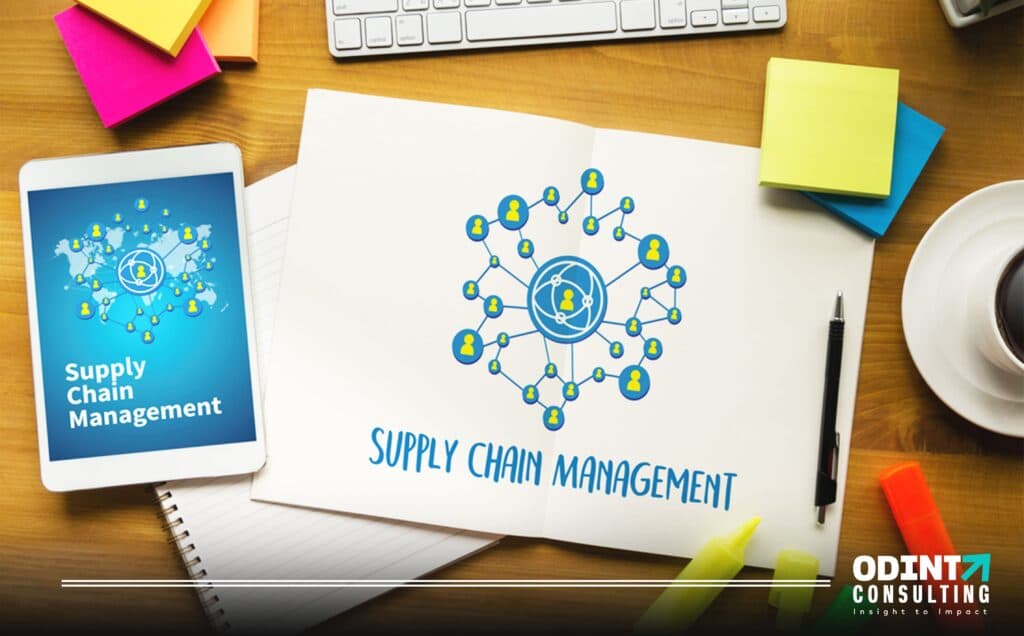
We would be learning more in detail about supply chain management in this article. We would be learning more about what is supply chain management, the processes involved in supply chain management, the importance of supply chain management, and the features of effective supply chain management.
What is supply chain management?
Supply chain management is a type of management that involves the transformation of raw materials into a final product, including numerous stages in between the entire method. Focusing on the flow of production should be done properly, as it helps the company to create products effectively with an affordable expense of production.
Let us take an example of this, take a scenario where you order your favorite food from an outlet’s app. Within minutes they would deliver your food to your doorstep. Now you must be wondering about the making of the pizza. The ingredients that include in a pizza is be the dough from which the base is made and then there are fillings of tomato sauce and several other things (as per preference), and there will be toppings and cheese.
Well, these things are not available in their natural form. These things are processed from their raw materials. now they must source their raw materials from somewhere. It includes a lot of manpower as well as machinery. Now, this pizza has many individual parts and each part is made and processed from its raw materials combined and processing it to be the end product. This process involves a lot of manpower, machinery, and transportation. It also involves a high expense.
Read More: FSSAI Registration For Your Business
Working of Supply Chain Management
The next question that you would have in your mind is how does supply chain management works.
Well, we can say that 5 steps are involved in the process of supply chain management. The steps are as follows:
- Planning
- Sourcing
- Manufacturing
- Logistics
- Returning
Let us look at these steps in detail.
- Planning- Good planning is required for almost every process. This is the initial step of every process. Good planning can give us a lot of clarity and it can eliminate lots of problems and confusion from the beginning. Taking about supply chain management in specific planning usually involves how to manage all resources and other steps involved in processing goods or services and fulfilling the customer demand. Planning is also the base of other steps involved in the process of supply chain management. Planning involves how to source the raw materials, how to manufacture the goods, how to manage the transportation of the goods and raw materials, and finally how to deal with the return of defective goods that have been delivered to the customer.
- Sourcing – The next step involved in the process of supply chain management is sourcing. Sourcing involves selecting the suppliers to provide us with raw materials or services which are involved in the production of goods and services. Then it involves monitoring the services done by the supplier and maintaining a good relationship with the supplier. The key process of sourcing includes ordering the raw material and goods, receiving them, managing the inventories, and managing the payments to them.
- Manufacturing- The next step after sourcing the goods is manufacturing. Manufacturing involves accepting and processing the raw materials, manufacturing the goods or service, testing for any faults or defects, and finally delivering it to the customer. Supply chain managers should monitor every step that is involved in the function of manufacturing so that there won’t be any problems arising.
- Logistics- Logistics or delivery of the product is important since the producers want the goods to reach their customers without any hassles or delay. Supply Chain managers should monitor the orders made by the customers, schedule the order, and make sure that it reaches the order within the time and without any problems, making the invoice of the order and make sure that they receive the payments correctly.
- Returns- Every production of goods or services cannot be 100% perfect. There might be cases of defective or wrong products delivered to the customer. It can occur due to the faults that happen during the production of the good or while the order was being processed. Human or machine errors are something that we cannot eradicate. There might be also instances where the customer didn’t like the product or doesn’t need the product or service anymore. It may not be the fault of the producer. So supply chain managers should create a system that can handle the return of such goods back to the producer.
Importance of supply chain management
There are numerous reasons why supply chain management is very important.
These includes:
- Producing the goods or services efficiently
- Producing the goods or services effectively
- Reducing the cost of production as well as sourcing the raw materials
- Proper management of orders of the customer
- Easy delivery of goods and services to the customers
- Good network to handle the return of goods
- Customer satisfaction
- Increasing the revenue and profit of the organizations
- Reducing problems arising while sourcing, producing, delivering, and returning the goods
Features of effective supply chain management
The key features of effective supply chain management include:
- Integration of supply chain- The integration of the supply chain is very important because if there is no proper integration of the supply chain it would lead to a lot of problems and the production and delivery of goods would be less efficient. It would also create a lot of financial problems and the budget and cost analysis would go in vain.
- Real-time analysis of what is happening- Real-time analysis can help to detect problems very quickly and bring changes to the supply chain. This would help the supply chain work smoothly and there would be a reduction in problems and confusion.
- Collaborations- Collaborations with the supplier are indeed a crucial part of the supply chain and it would help the process to move smoothly.
- Ability to optimize- Nowadays there is a lot of involvement of technology in the process of supply chain management. Optimizations can reduce the overall cost of production as well as make production more efficient. The automation of regular tasks can make employees focus on more important functions regarding the production of goods and services. Also, difficult tasks involved in the supply chain can be solved using analytics and artificial intelligence.
- Forecasting– Forecasting as well as analytics can improve the performance and production capacity and capabilities of your supply chain.
Conclusion
In this article, we have learned more about supply chain and supply chain management. We have dived deep into topics like what is supply chain management and how supply chain management works, the importance of having supply chain management, and features of effective supply chain management
We have also discussed the processes that are involved in supply chain management. we have used an example to make things clear
FAQ’s
We can say that supply chain management is the management of all processes that involve the transformation of raw material into its end product and delivering it to the customers. it also involves lots of substeps. Managing the flow of production is an important thing as it will help production organizations to make products efficiently, and effectively, and reduce the cost of production.
Planning, Sourcing, Manufacturing, Logistics, Returning
